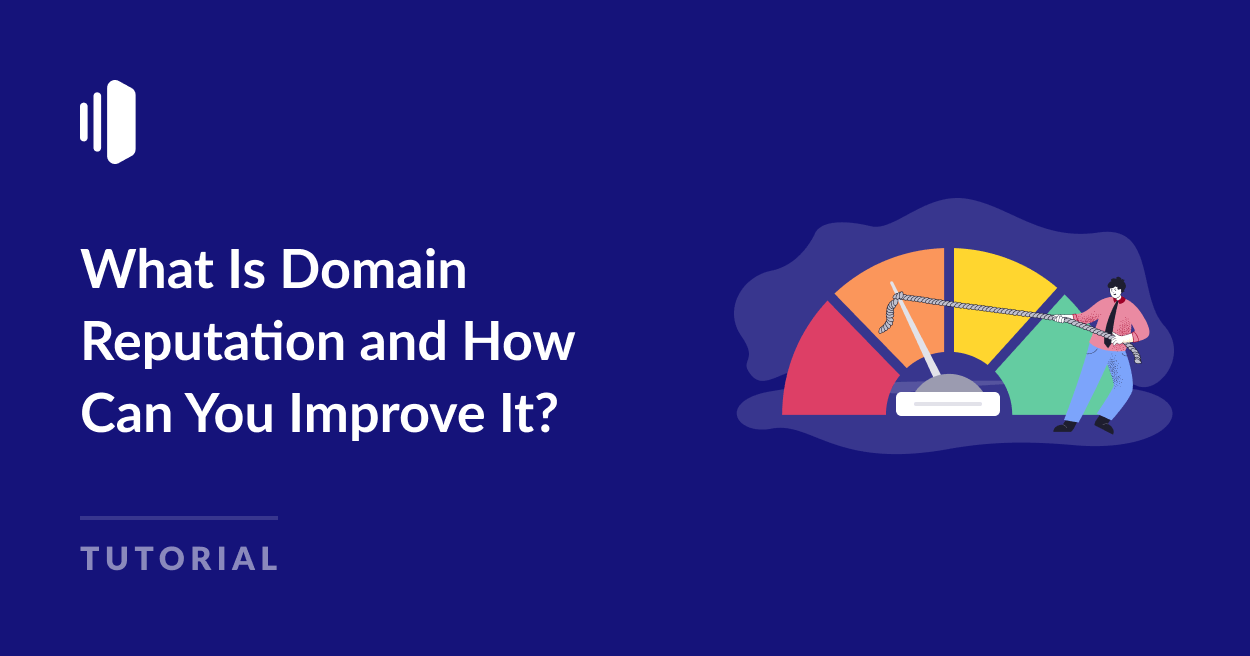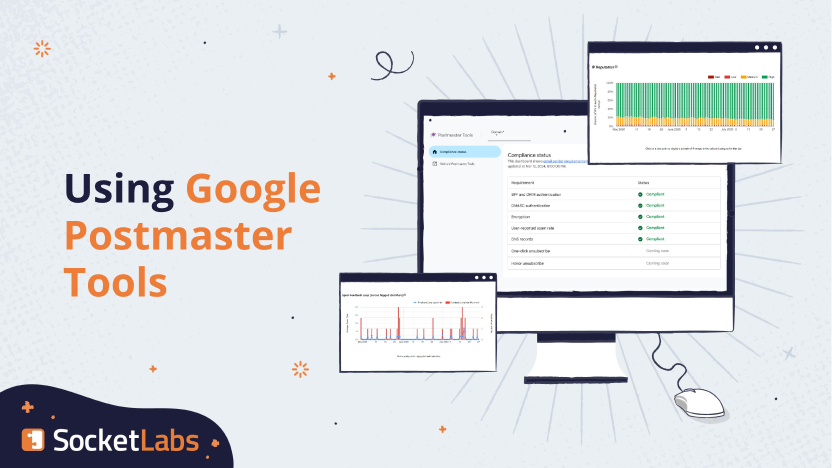Summary
Despite compliant authentication, a negative Gmail reputation during domain migration can arise from various interconnected factors. A sudden shift in sending patterns, neglecting to warm up the new IP address or domain gradually, a poor pre-existing reputation of the old domain, and inconsistent branding practices can all contribute. Gmail's sophisticated reputation system considers multiple elements, including sending infrastructure, complaint rates, spam trap hits, and user engagement. Technical issues such as incorrect SPF records, DKIM signatures, and reverse DNS records can also negatively impact deliverability. Poor list hygiene, irrelevant or spammy content, and a failure to proactively notify subscribers about the domain change exacerbate these challenges. The consensus highlights the importance of a comprehensive approach, focusing on technical accuracy, gradual migration, subscriber engagement, and consistent branding to maintain a positive sender reputation.
Key findings
- Sudden Sending Shifts: Abrupt changes in sending patterns trigger spam filters.
- IP/Domain Warmup Crucial: Neglecting to warm up the new IP or domain significantly damages deliverability.
- Old Domain's Legacy: A poor reputation from the old domain affects the new one.
- Authentication Imperative: Incorrect SPF, DKIM, and reverse DNS configurations hurt reputation.
- Content Matters: Spammy content or similar content to old domain leads to deliverability issues.
- List Hygiene Paramount: Poor list hygiene with unengaged users directly harms deliverability.
- Branding Consistency: Inconsistent 'From' addresses and branding confuse filters.
- Gmail Reputation Building: You have to build your reputation with Gmail.
Key considerations
- Gradual Migration: Implement a gradual migration strategy with careful monitoring.
- Proactive Subscriber Communication: Inform subscribers about the domain change.
- Meticulous Technical Setup: Verify SPF, DKIM, and reverse DNS records are correctly configured.
- Content Optimization: Ensure relevant and engaging content without spam triggers.
- List Cleaning and Segmentation: Remove inactive users and segment lists for targeted sending.
- Consistent Branding: Maintain consistent branding across all communications.
- Engagement Monitoring: Closely track engagement metrics and adjust strategies accordingly.
- Configuration Check: Validate email configurations are working as expected using tools such as aboutmy.email.




























































What email marketers say
8 marketer opinions
During domain migration, a bad Gmail reputation despite compliant authentication can stem from several factors. Sudden changes in sending patterns, including volume and content, can trigger spam filters. A poor reputation of the old domain, similarities in content/recipient lists, and neglecting to warm up the new domain IP properly negatively impacts deliverability. Inconsistent branding, 'From' address changes, and poor list hygiene practices further exacerbate issues. Proactively informing subscribers of the change, avoiding spam trigger words, ensuring proper HTML formatting, and monitoring engagement metrics are crucial for a successful transition.
Key opinions
- Sudden Changes: Abrupt shifts in sending volume or content can trigger spam filters.
- Old Reputation Impact: A poor reputation of the previous domain can carry over and affect the new domain.
- Warming is Vital: Failing to warm up the new sending IP and domain gradually hurts deliverability.
- Inconsistent Branding: Changes to 'From' address or sender name can confuse Gmail's filters.
- Content Matters: Using similar or identical content during migration, and spam trigger words in email can be detrimental.
- List Hygiene: Poor list hygiene and a failure to remove inactive users is a common issue.
Key considerations
- Gradual Ramp-Up: Gradually increase sending volume on the new domain, starting with engaged users.
- Monitor Engagement: Actively monitor bounce rates, complaint rates, open rates, and click-through rates.
- Subscriber Notification: Proactively inform subscribers about the domain change.
- Content Review: Review email content to avoid spam trigger words and ensure proper HTML formatting.
- List Cleaning: Regularly clean your email list to remove invalid or inactive addresses.
- Consistent Branding: Maintain consistent branding and sender names across both domains.
Marketer view
Email marketer from Reddit shares that a sudden change in the 'From' address during domain migration can confuse Gmail's filters. They suggest maintaining consistent branding and sender names to avoid being flagged as suspicious. Furthermore, they recommend closely monitoring engagement metrics and adjusting sending strategies accordingly.
24 Nov 2024 - Reddit
Marketer view
Email marketer from Neil Patel Digital explains that sudden changes in sending patterns during domain migration can trigger spam filters, even with proper authentication. It is important to gradually ramp up sending volume from the new domain to establish a positive reputation with Gmail and other ISPs. Also, ensure consistent branding and content quality across both the old and new domains to avoid being flagged for phishing or spam.
20 Oct 2022 - Neil Patel Digital
What the experts say
4 expert opinions
Despite compliant authentication, a bad Gmail reputation during domain migration can occur if the new IP address isn't properly warmed up, as Gmail considers its history. Even if a domain has a good reputation, neglecting to build reputation with Gmail by sending wanted mail to engaged users consistently, maintaining strong user experience, list management and sending cadence, can cause deliverability issues. It is important to check configurations with aboutmy.email during this period.
Key opinions
- IP Warmup Neglect: Failing to properly warm up the new IP address can lead to deliverability problems with Gmail.
- Gmail Reputation Building: Even with good domain authentication, reputation with Gmail itself must be established.
- Engagement Focus: Need to send wanted mail to engaged users consistently, maintain strong user experience.
- Configuration Verification: Email configurations can be checked with aboutmy.email
Key considerations
- IP Address Warmup: Prioritize a gradual and proper warmup of the new IP address.
- Consistent Sending: Focus on consistent sending to engaged users to build Gmail reputation.
- List Management: Maintain strong list management and segmentation practices.
- Check configuration: Verify configurations are working as expected using aboutmy.email
Expert view
Expert from Word to the Wise, Steve Jones, responds that regardless of domain reputation or authentication, you need to focus on building your reputation with receivers like Gmail. That reputation comes from sending wanted mail to engaged users consistently, so it’s important to focus on a strong user experience, proper list management and segmentation, and a solid sending cadence.
9 May 2022 - Word to the Wise
Expert view
Expert from Spam Resource, John Levine, explains that during a domain migration, even with proper authentication, neglecting to warm up the new IP address properly can lead to deliverability issues. He mentions that Gmail pays attention to the history of the IP address, and if it's suddenly sending large volumes of mail without prior establishment of good sending practices, it can negatively impact the sender's reputation.
21 Jan 2022 - Spam Resource
What the documentation says
5 technical articles
Gmail reputation during domain migration, even with compliant authentication, can be negatively affected by several factors. Google emphasizes that its reputation system considers sending infrastructure, complaint rates, and spam trap hits, so sudden shifts in sending patterns can trigger suspicion. RFC highlights the importance of accurate SPF records. DKIM signatures must be valid, and Microsoft points out the necessity of correct reverse DNS records. M3AAWG stresses gradually increasing sending volume, consistent branding, and monitoring engagement metrics.
Key findings
- Multifactorial Reputation: Gmail's reputation considers authentication, infrastructure, complaints, and spam traps.
- SPF Importance: Accurate SPF records are crucial but don't guarantee deliverability.
- DKIM Integrity: Valid DKIM signatures are essential for verifying message integrity.
- Reverse DNS Records: Correct reverse DNS records are necessary for establishing trust.
- Gradual Ramp-Up: Gradually increasing sending volume during migration is important.
Key considerations
- Verify Authentication: Ensure all authentication methods (SPF, DKIM) are correctly configured.
- Monitor Metrics: Closely monitor complaint rates and spam trap hits.
- Sending Patterns: Avoid sudden shifts in sending volume or patterns.
- Consistent Branding: Maintain consistent branding throughout the migration process.
- Relevant Content: Ensure content is relevant and engaging to subscribers.
Technical article
Documentation from Microsoft highlights that incorrect reverse DNS records can negatively impact sender reputation, especially during domain migration. Ensuring that your sending IP address has a valid and properly configured reverse DNS record is crucial for establishing trust with mailbox providers. This helps verify that your sending server is legitimate and authorized to send email on behalf of your domain.
13 Jul 2022 - Microsoft
Technical article
Documentation from M3AAWG (Messaging, Malware and Mobile Anti-Abuse Working Group) explains about gradually increasing sending volume, maintaining consistent branding, and monitoring engagement metrics. Sending inconsistent or irrelevant content during the transition can negatively impact sender reputation. Ensure that your email content is relevant and engaging to your subscribers to maintain a positive sender reputation.
21 Jun 2022 - M3AAWG
How can I optimize email deliverability when migrating to a subdomain and experiencing Gmail reputation drops?
How can I recover my Gmail IP reputation after a sudden drop and hitting spam traps?
How can I repair a client's Gmail sender reputation after a migration and sending issues?
How do you migrate an email sending domain from one platform to another?
Is IP warming necessary when migrating ESPs to shared IPs, and what are the best practices?
Should I migrate to a dedicated IP before BFCM if my deliverability is currently good?






